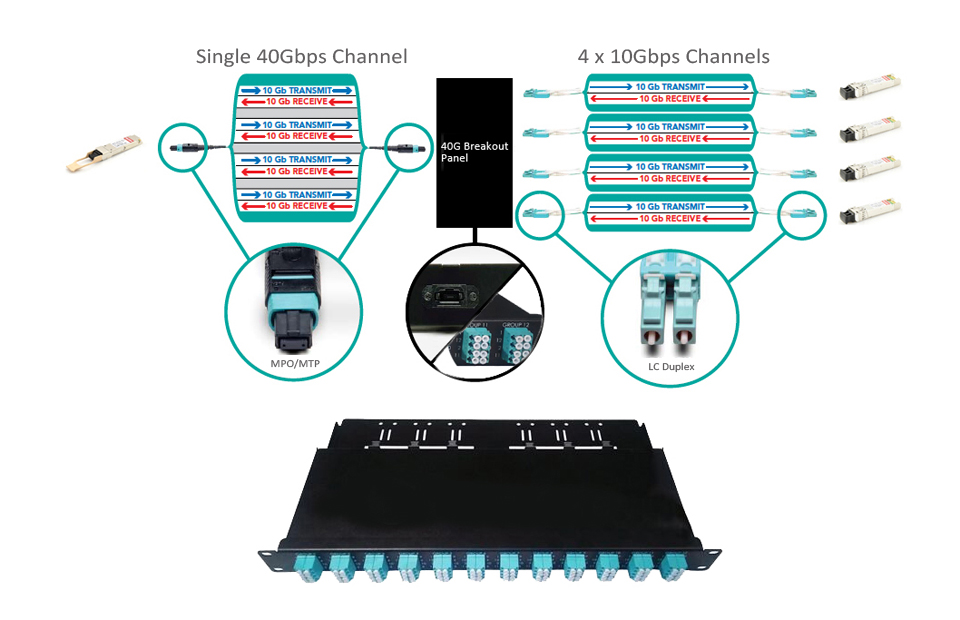The increasing demand for faster access to larger volumes of data, emerging high-speed network standards and rapidly advancing technology make it essential to integrate equipment with different network speeds into your network infrastructure. Modular patch panel solutions allow you to seamlessly and conveniently integrate equipment with 10G, 40G and 100/120G speeds to meet your connectivity needs future-proof your networks.
When you plan to integrate 10G and 40G equipment in your data center, you’re supposed to make sure that the existing network of 10G servers and other devices can be connected to your higher-speed switches like 40G switches. And connectivity with future network standards should be taken into consideration as well. Although multiple-speed applications coexist in the same data center is not a fresh topic, the parallel optics cabling used for data transmission speeds of 40G and beyond does present a series of connectivity challenges.
Modular patch panels are comprised of rack-mountable enclosures to house a range of modular and removable fiber cassettes. By supporting various fiber network cabling standards, the cassettes are easy to mix, add and change according to your changeable connectivity needs. Modular patch panels is an ideal way to create a standard-based, flexible, and reliable network platform in data centers.
The key to modular patch panels solution is modular fiber cassettes, which are available in multiple variations. The cassettes allow you to interconnect different fiber speeds simply by plugging standard duplex LC cables into one side of the cassette and one or more standard MPO/MTP cables into the other side.

- Integrating various cabling standards—modular patch panel solutions allow you to connect diverse network cabling standards seamlessly, including 10/10G, 10/40G, 40/40G, 10/100/120G and 40/100/120G, as well as future standards.
- Utilizing standard patch cords—Since connections use standard patch cords that are readily available, you can make changes and repairs without the delays and added expense associated with custom cabling.
- Offering flexibility and scalability—as you integrate new cabling standards to support higher network speeds, you can simply swap existing cassettes with new cassettes that support the new standards. Your network can grow and change conveniently, without the costly, labor-intensive process of replacing channels end-to-end.
- Reducing cable congestion—reduced cable slack means less clutter, less confusion and an easily organized, better-labeled cabling infrastructure. You can also manage cables in any direction, be it horizontal or vertical, front or back.
- Space-saving—you can save valuable rack space to lower data center costs by managing various port densities and speeds in a single high-density patch panel. A single patch panel can manage as many as (168) 10G ports.
- Right-size investments—with a modular solution, you can buy and load only the cassettes you need now, while leaving room for future expansion.
Although modular patch panel solution provides a feasible and optimized way to migrate and upgrade your networks, ensuring users to integrate equipment with different network speeds seamlessly and conveniently. It also faces the challenge when selecting a modular patch panel solution that best fits your demand. So users should choose the right one to satisfy connectivity needs for now and future-proof network for tomorrow which would ensure a maximum return on investment.










※コメント投稿者のブログIDはブログ作成者のみに通知されます